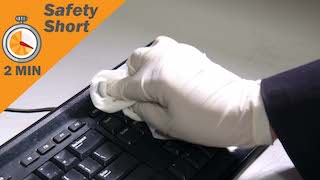

As a family, coronaviruses are common across the globe. This safety short...
MORE INFO </> Embed
</> Embed
As a family, coronaviruses are common across the globe. This safety short outlines some of the control measures that can be taken to prevent their spread.
RUNNING TIME: 2 Minutes
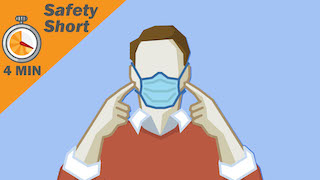

Face Masks are an effective control measure that can be used to control...
MORE INFO </> Embed
</> Embed
Face Masks are an effective control measure that can be used to control the spread of Coronaviruses. This safety short gives a quick overview of common mask types and how to use them correctly.
RUNNING TIME: 4 Minutes
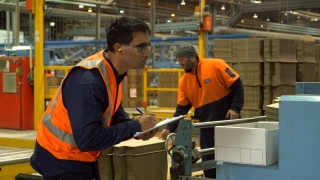

In simple terms a risk assessment requires the identification of workplace...
MORE INFO </> Embed
</> Embed
In simple terms a risk assessment requires the identification of workplace hazards and an evaluation of the risks they present.
The purpose of an overall workplace risk assessment is to establish whether the level of risk arising from workplace activities is acceptable, or whether additional measures need to be taken to control workplace hazards to further reduce or remove unacceptable risks.
The program includes the following Elements of a Risk Assessment:
Regardless of the hazards present, the proper application of the risk assessment process will result in a safer workplace.
RUNNING TIME: 18 minutes
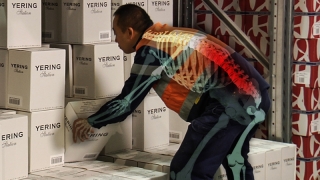

What is manual handling? Simply, manual handling is the movement of items...
MORE INFO </> Embed
</> Embed
Simply, manual handling is the movement of items by human energy.
Manual handling includes lifting, holding, pushing, pulling, shifting and lowering. In fact, any form of human exertion could be included – with or without the use of mechanical aids.
The steps to deal with manual handling can often be addressed by following through a series of questions. This process, the hierarchy of control measures asks the following:
Manual handling contributes directly to a significant percentage of work related accidents and injuries. Manual handling is an issue that must be addressed as an ongoing subject in the workplace.
RUNNING TIME: 12 Minutes
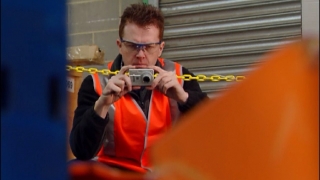

There are laws and regulations that require the investigation and...
MORE INFO </> Embed
</> Embed
There are laws and regulations that require the investigation and reporting of certain types of accidents. Insurance requirements also lead to many Accident Investigations as do potential claims at common law. However, from an Occupational Health & Safety point of view, the main aim of Accident Investigations is not to fulfil these legal and insurance obligations, but rather to prevent recurrences of the same or similar accidents.
Accident Investigations therefore should be regarded as an important part of accident prevention.
This program covers:
Learning why and how accidents occur is fundamental to making improvements in both working conditions and operational methods.
The Accident Investigation process will reduce the number of workplace accidents and should be regarded as an important component of any workplace health and safety strategy.
RUNNING TIME: 12 Minutes


Some workplace hazards are obvious: when there is a risk of physical...
MORE INFO </> Embed
</> Embed
Some workplace hazards are obvious: when there is a risk of physical injury in the workplace, it can be relatively easy to identify and address. But work can also carry risks to mental health.
This program examines the various ways stress can affect members of an organisation as well as potential methods for combatting it.
Topics included in the program:
Work-related stress is not always the easiest of workplace hazards to identify. But being aware of the potential risks, and moving pro-actively to prevent stress taking hold, will help minimise the chances of stress-related illness.
RUNNING TIME: 11 Minutes
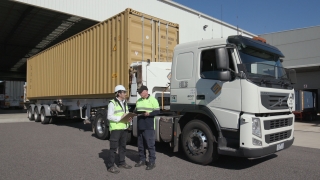

The Chain of Responsibility is an initiative in the transport industry,...
MORE INFO </> Embed
</> Embed
This program examines the important role everyone involved in the completion of a transport task has in making sure safety guidelines are adhered to.
Topics included in the program:
When everyone in the chain is working together to manage risks, and recognises that responsibility for the safe completion of a transport task lies with all of them, safety is greatly improved, and everyone’s job becomes easier.
RUNNING TIME: 7 Minutes
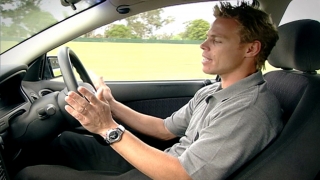

Every time we get in our cars we’re potentially putting our lives at risk....
MORE INFO </> Embed
</> Embed
Every time we get in our cars we’re potentially putting our lives at risk. Being aware of the car we drive and understanding our car’s safety technology and how it works can greatly improve our driving safety.
This program is designed to make us more aware of the cars we drive, and in so doing, make us more conscious of what we’re doing when we’re behind the wheel.
This program looks at:
Sitting in the car correctly:
Steering:
Airbags
ABS
Stopping Distances
Being an aware driver is fundamental to being a safe driver. It is the responsibility of every driver to know their car and to be aware of the way they drive. Increasing our awareness as drivers means that every time we’re in the car we’re putting safety first.
RUNNING TIME: 12 minutes


Road safety is a major public safety issue. A large proportion of road...
MORE INFO </> Embed
</> Embed
Road safety is a major public safety issue. A large proportion of road travel is work-related, and research shows that work vehicles are involved in accidents at a higher rate than private vehicles.
This program examines the important role played by all members of an organisation in avoiding accidents, including observing warning signs and maintaining strict adherence to company policy.
Topics included in the program:
Work-related driving presents some significant safety challenges. But, with due care and attention accidents and injuries can and will be reduced.
RUNNING TIME: 7 Minutes
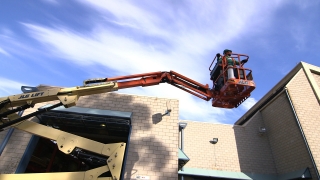

Elevating Work Platforms are also referred to as EWPs or Mobile Elevating...
MORE INFO </> Embed
</> Embed
Elevating Work Platforms are also referred to as EWPs or Mobile Elevating Work Platforms (MEWPs). The use of EWPs has been a major factor in the reduction of falls accidents in the workplace, and in many cases, the use of an EWP is the safest solution to enabling temporary work at height.
However, the use of EWPs is not risk free. There are many potential hazards associated with the use of EWPs.
This comprehensive EWP safety program covers:
The objective of this program is to highlight the importance of operating EWPs safely and by so doing, increase awareness of the standards for worker responsibility in observing and being active in daily safety procedures.
DURATION: 16 Minutes
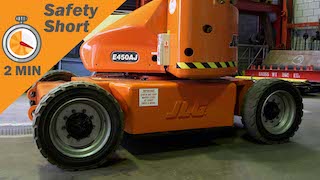

The use of Elevating Work Platforms (EWPs), also referred to as Mobile...
MORE INFO </> Embed
</> Embed
The use of Elevating Work Platforms (EWPs), also referred to as Mobile Elevating Work Platforms (MEWPs) has been a major factor in the reduction of falls and accidents in the workplace. This safety short gives you a quick overview of the general guidelines when operating an EWP.
RUNNING TIME: 2 Minutes
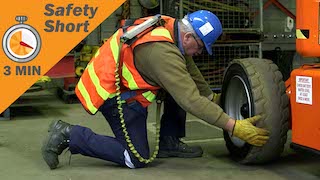

The use of Elevating Work Platforms (EWPs), also referred to as Mobile...
MORE INFO </> Embed
</> Embed
The use of Elevating Work Platforms (EWPs), also referred to as Mobile Elevating Work Platforms (MEWPs) has been a major factor in the reduction of falls and accidents in the workplace. This safety short gives you a quick overview of checks that should be performed before operating an EWP.
RUNNING TIME: 3 Minutes


It should be the priority of every organisation, and every individual...
MORE INFO </> Embed
</> Embed
It should be the priority of every organisation, and every individual within an organisation, to protect the health and safety of their colleagues and the public, and to ensure their workplace minimises environmental damage, in all its forms.
This program examines how organisations can be aware of their impact on the environment and methods that can be implemented to reduce environmental damage.
Topics included in the program:
Knowing the ways in which your workplace can affect the environment, and staying aware of the ways you can prevent environmental damage from your work, is the first step to creating a more eco-friendly workplace.
RUNNING TIME: 11 Minutes
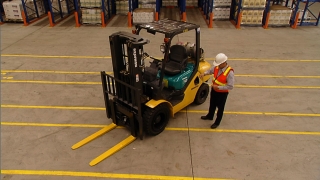

Forklifts – sometimes called Lift Trucks – are a common sight in many...
MORE INFO </> Embed
</> Embed
Forklifts – sometimes called Lift Trucks – are a common sight in many workplaces, and often make the lifting and transporting of goods and materials much easier and safer.
But without good safety practices and procedures in place forklifts can be very dangerous. In fact, forklifts are a leading cause of workplace deaths and injuries.
A loaded forklift can weigh many tonnes, and do a lot of damage in the event of an accident. In addition, they are frequently less stable than many other vehicles.
This comprehensive forklift safety program covers:
The objective of this program is to highlight the importance of operating Forklifts safely and by so doing, increase awareness of the standards for worker responsibility in observing and being active in daily safety procedures.
DURATION: 18 Minutes
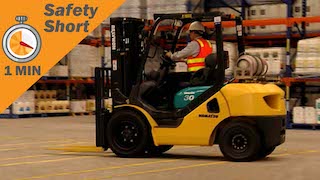

A loaded forklift can weigh many tonnes, and do a lot of damage in the event...
MORE INFO </> Embed
</> Embed
A loaded forklift can weigh many tonnes, and do a lot of damage in the event of an accident. In addition, they are frequently less stable than many other vehicles. This safety short gives you a quick overview of checks that should be performed before operating a forklift.
RUNNING TIME: 1 Minute


This program looks at a range of lifting equipment and the fundamental...
MORE INFO </> Embed
</> Embed
The program looks at all the general do's and don'ts when using slings and highlights the importance of the pre-use checks and what all operators should look for when selecting the appropriate sling for a given task.
RUNNING TIME: 17 Minutes
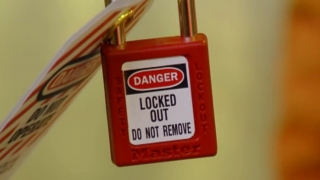

Cuts, burns, amputations, exposures to hazardous substances, electric...
MORE INFO </> Embed
</> Embed
Cuts, burns, amputations, exposures to hazardous substances, electric shocks, asphyxiations and drownings are just some examples of consequences that can occur when work is carried out on plant and equipment that has not been properly shutdown.
The shutdown of plant and equipment before work is carried out is commonly referred to as a lockout or a lockout/tagout.
Lockouts protect the health and safety of the people working directly on the piece of equipment or plant as well as others who may be in the vicinity.
This program covers:
The objective of this program is to highlight the importance of following Lockout Procedures and by so doing, increase awareness of the standards for worker responsibility in observing and being active in daily safety procedures.
RUNNING TIME: 10 Minutes
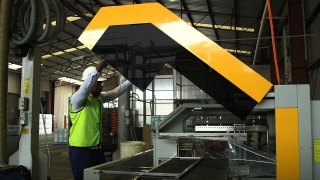

Accidents resulting from inadequate equipment and machine guarding cause...
MORE INFO </> Embed
</> Embed
Accidents resulting from inadequate equipment and machine guarding cause some of the most traumatic injuries in the workplace today.
This program covers the following:
Advances in technology, safety standards and risk management have all contributed to increasingly effective guards being used in the workplace today, but despite all these advances, horrific accidents still occur.
When guards are not in place or when guards are not used correctly, people can be pulled into machines, have limbs amputated and body parts crushed.
It is therefore critical that we are aware of and understand the elements covered in this program. This will help all workplace personnel to avoid accidents and injuries when working with equipment and machinery.
RUNNING TIME: 15 Minutes


Safe driving is a must under any circumstance, given the potential serious...
MORE INFO </> Embed
</> Embed
Safe driving is a must under any circumstance, given the potential serious consequences of vehicle accidents.
Winter conditions present additional challenges that must be properly understood and prepared for whenever driving takes place.
This program includes:
With an awareness of the hazards present and careful preparation a driver can stay safe in all conditions.
RUNNING TIME: 15 Minutes
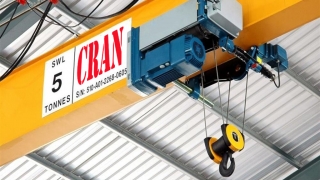

Pendent, or hand controlled, overhead cranes or hoists are one of the most...
MORE INFO </> Embed
</> Embed


Work on trenches and excavations carries numerous hazards and can pose a...
MORE INFO </> Embed
</> Embed
Work on trenches and excavations carries numerous hazards and can pose a serious threat of injury and even death, if the risks are not properly assessed and guarded against.
The hazards of trenching and excavation can affect workers both above and below ground. These hazards include:
RUNNING TIME: 12 Minutes


There are a variety of control measures that can be put into place to...
MORE INFO </> Embed
</> Embed
There are a variety of control measures that can be put into place to address the hazards of excavation and trenching.
There are three ways of controlling the risk of ground collapse:
After an excavation has been dug, nobody should enter until an appropriate ground support system is in place.
RUNNING TIME: 4 Minutes